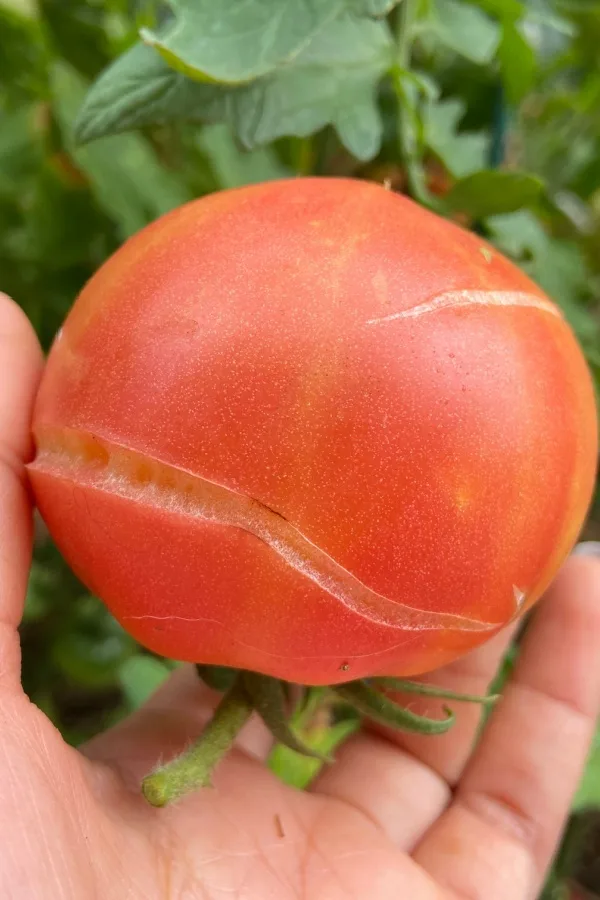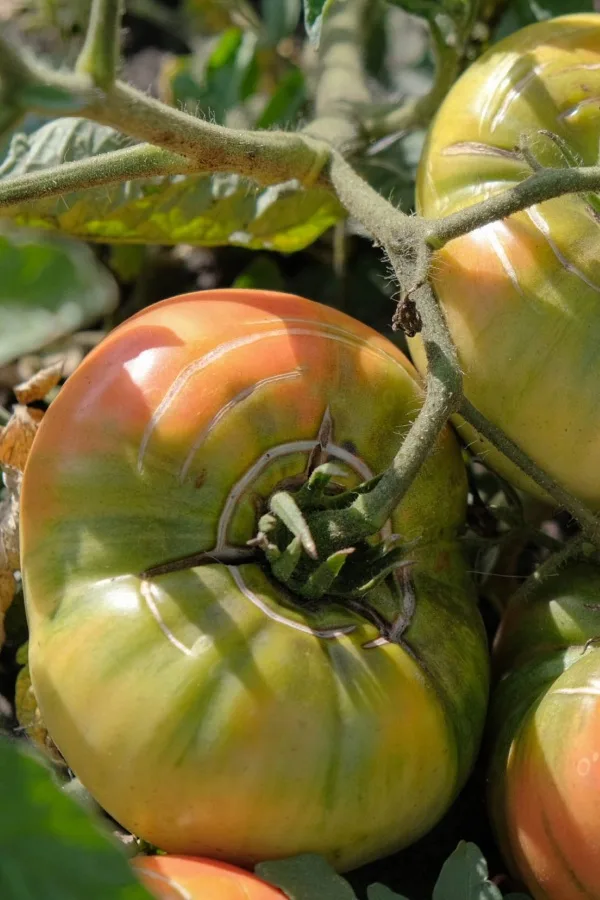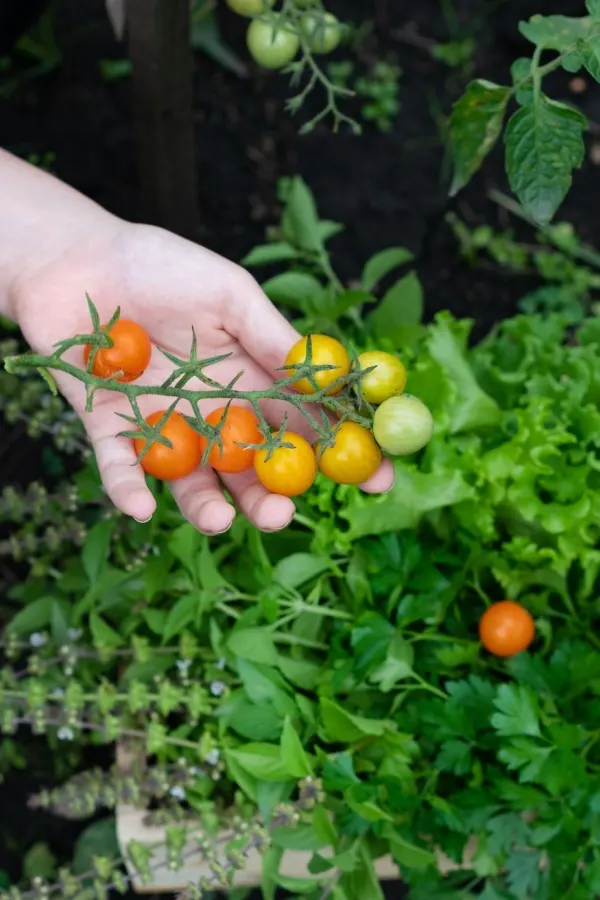Looking for simple ways to keep your tomatoes from cracking and splitting before you even get a chance to harvest them?
Have you ever patiently waited until just the perfect time to pick that juicy, red tomato from your plant – only to notice huge cracks and splits on the skin? One thing is for sure, it can be one of the most frustrating things for tomato growers to experience!
Not only do these splits and cracks look unsightly, but they also expose the tender flesh of the fruit to the outside air. This results in a loss of moisture as the flesh and juices start to ooze out.

What’s worse is that the exposed flesh is a huge attraction to nearby pests and insects, making for a quick and easy meal. And if all of that wasn’t enough, the cracks and openings on the tomato are a breeding ground for bacteria and mold to quickly take hold.
So what can you do to help prevent your tomato plants from cracking and splitting in the first place? It all starts with knowing exactly what causes them to split in the first place!
Why Tomatoes Split & Crack
Almost every variety of tomato is at risk of splitting – from huge beefsteaks all the way down to tiny cherry tomatoes. In fact, cherry tomatoes are one of the more common victims of splitting.
Quite often, it seems like the ripening tomatoes are perfectly fine one day and the next each fruit is covered in cracks and splits. And in reality, it really can happen that fast!
Believe it or not, cracking and splitting has nothing to do with a lack of nutrients in the soil. Nor does it have anything to do with pests or disease either, even though both might be present if the tomatoes have been split for long.

As it turns out, the most common reason for tomatoes splitting and cracking is actually due to a rapid change in moisture levels. When tomato plants are suddenly exposed to a large amount of water at one time, the plants quickly absorb the moisture and send it throughout the stems.
This moisture starts to fill out the flesh of the fruit at a much quicker rate than the skins can keep up with. And when the flesh finally runs out of room, the skin is forced to split or crack open.
Plants that have not been watered or haven’t received any rainfall are most at risk for splitting. When you finally go to water plants or a rain storm drops a large amount of water all at once, splitting then occurs.
How To Keep Your Tomatoes From Splitting
There are two simple ways to help keep your tomatoes from splitting. The first is to make sure they receive consistent and adequate water. And the second is to pick your tomatoes far earlier in the ripening process. Let’s first start by covering best practices when it comes to watering.
A consistent watering schedule prevents plants from going too long without moisture and then getting large amounts all at once. While you can’t control the rain nature brings, you can control how much and how often you hand water plants. If their roots have adequate water, they can handle a large dose of rain without splitting.

In order to grow healthy tomatoes, your plants require around 1 to 1 ½ inches of water each week.
If you don’t see any rain in the forecast for the week, it’s time to water. The key, however, is to not water plants a little bit here and there each day. Instead, you want to give plants a good deep drink only once or twice a week.
Watering deeply helps encourage roots to grow down deep into the soil. This helps to provide top-heavy plants with a good base. In addition, it also allows the plants to reach more nutrients and moisture deep in the soil.
Checking Moisture Levels
To help know whether or not you need to water your tomatoes, one of the easiest and best methods is to use an inexpensive soil moisture probe. With a meter, you can put the probe down deep to the root level to know exactly if the plant needs water or not. Affiliate Product Link: 4-in-1 Soil Moisture Meter

Many times, the top of the soil is bone dry while several inches down the soil is still very wet. This can cause you to overwater plants and bring about a whole host of other issues. Since the roots are deep in the soil, that’s where you need to measure the moisture.
Picking Early and ripening off is key
The second important way to keep tomatoes from splitting is to pick the fruit early. Even though it might be tempting to keep your tomatoes on the vine until they have reached a beautiful, bright red color, it’s better to get them off the vine as soon as they start to turn color.
Picking tomatoes early helps to keep both the plants and the fruit healthier. The longer the fruit stays on the plant, the higher the chances are that splitting occurs. As tomatoes ripen and fill out, their skins start to slow down on growing. And the fruit can split if the flesh winds up absorbing too much water at this stage.
Once the tomatoes start to turn their mature color, they are ready for harvesting. They no longer need to stay on the vine in order to finish ripening. See our article: How To Ripen Tomatoes Off The Vine

Not only does this help prevent the fruit from splitting, but it also reduces an issue called fruit overload. Fruit overload occurs when you allow too many tomatoes to stay on the plant at one time. When this happens, the plant will slow down on even stop setting new blooms.
This of course ends up reducing your plant’s overall harvest and production. But by simply picking early and often, you can not only stop fruit overload – but keep your tomatoes from cracking and splitting too! For more tips on keeping your plants and crop safe, see our article: How To Protect Your Tomato Plants & Tomatoes From Raccoons!
I Grow Tomatoes
I Grow Tomatoes
Follow Our Facebook Page For Even More Great Tomato Growing Tips! I Grow Tomatoes Facebook Page
I Grow Tomatoes is a website created for those who love all things about tomatoes – from planting and growing – to cooking and canning! We publish two articles every week, 52 weeks a year. Sign up today to follow via email! This article may contain affiliate links.
